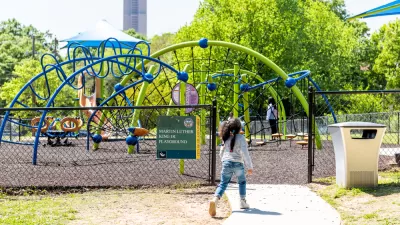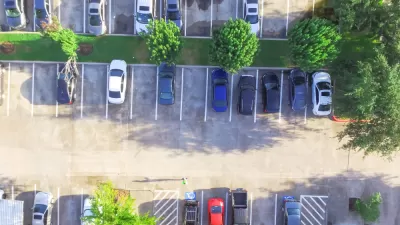Conventional wisdom dictates that middle-class families would find urban schools more tempting if we only “fixed the schools”- a concept that implies that urban public schools are simply unable to educate anyone, because they are either horribly underfunded (in the liberal version of this claim) or horribly mismanaged (in the conservative version).
Conventional wisdom dictates that middle-class families would find urban schools more tempting if we only "fixed the schools"- a concept that implies that urban public schools are simply unable to educate anyone, because they are either horribly underfunded (in the liberal version of this claim) or horribly mismanaged (in the conservative version).
A few days ago, the National Center for Education Statistics came out with the Mathematics 2009 Trial Urban District Assessment (TUDA)(1), a test designed to compare urban school districts. TUDA tells us, not surprisingly, that public schools in the major cities tested have lower fourth-grade test scores than those of the nation as a whole: the average national score is 239, while the average big-city score is 231.
But there were one statistically significant exception to this rule: Charlotte, North Carolina, which clocked in at 245. What could that city be doing right? Well, its demographic makeup might be relevant: 47 percent of Charlotte students are eligible for subsidized school lunches, far below any other urban system listed (and in fact below the national average of 48 percent).
In fact, when we control for race the suburban advantage disappears: in eight of the eighteen urban school districts tested, white students did better than the national average for whites. And white students performed below the national average in only five. (In most of the rest, whites were either so scarce that test results were statistically insignificant, or performed at about the same level as the national average).
Similarly, among students affluent enough to be ineligible for subsidized lunches, urban students performed as well as the national average: better than the national average in four urban school systems, worse in four, and about the same in ten.
If supposedly bad school districts educated all students badly, we would find that the school districts with the worst scores were the ones in which affluent and white students performed below the national average. But this was not always the case. For example, Washington, D.C's average fourth-grade score was 220, second worst among the listed school districts. But the District's white student population scored an average of 270, above not only the national average, but above the score for top-ranking Charlotte (263). The same was true for Atlanta, whose average score was 225 (fifth from the bottom) but whose white students clocked in at 266. (I note that both these cities no longer have significant white working-class populations; thus, race is a better proxy for affluence there than in some other cities).
On the other hand, "bad" school districts were somewhat worse than the nation as a whole in educating low-income students (defined as those eligible for subsidized lunches). The national average for low-income students was 228; Atlanta low-income students scored 216, and Washington students scored 210, worse than every city but Detroit.(2) However, the differences between urban schools and the national average were often far lower than the differences between races and classes; for example, the gap between Atlanta's low-income students and the national average was 12 points, but the gap between the national low-income average and the national average for non-low-income students was 22 points.
In sum, the "worst" school districts were often reasonably good at educating the sort of children who can afford suburbia - but were especially bad in educating the children of the poor.
This tells us that the so-called "urban school crisis" is really two separate problems: (1) American schools' collective inability to educate disadvantaged students, and (2) affluent parents' unwillingness to send their children to schools full of those students. The two problems may well have different solutions. For example, magnet schools for high achievers may be very useful in solving (2) but won't do much to solve problem (1). Conversely, I am not sure how much progress we would need to make on problem (1) to really affect problem (2).
(1): All data are available at http://nces.ed.gov/pubsearch/pubsinfo.asp?pubid=2010452
(2): Statistics for eighth-graders are roughly similar, but differ in that many school districts have so few white students that interracial comparisons are impossible.

Study: Maui’s Plan to Convert Vacation Rentals to Long-Term Housing Could Cause Nearly $1 Billion Economic Loss
The plan would reduce visitor accommodation by 25,% resulting in 1,900 jobs lost.

North Texas Transit Leaders Tout Benefits of TOD for Growing Region
At a summit focused on transit-oriented development, policymakers discussed how North Texas’ expanded light rail system can serve as a tool for economic growth.

Using Old Oil and Gas Wells for Green Energy Storage
Penn State researchers have found that repurposing abandoned oil and gas wells for geothermal-assisted compressed-air energy storage can boost efficiency, reduce environmental risks, and support clean energy and job transitions.

Private Donations Propel Early Restoration of Palisades Playground
Los Angeles has secured over $1.3 million in private funding to restore the Pacific Palisades playground months ahead of schedule, creating a modern, accessible space that supports community healing after recent wildfires.

From Blight to Benefit: Early Results From California’s Equitable Cleanup Program
The Equitable Community Revitalization Grant (ECRG) program is reshaping brownfield redevelopment by prioritizing projects in low-income and environmental justice communities, emphasizing equity, transparency, and community benefits.

Planting Relief: Tackling Las Vegas Heat One Tree at a Time
Nevada Plants, a Las Vegas-based nonprofit, is combating the city’s extreme urban heat by giving away trees to residents in underserved neighborhoods, promoting shade, sustainability, and community health.
Urban Design for Planners 1: Software Tools
This six-course series explores essential urban design concepts using open source software and equips planners with the tools they need to participate fully in the urban design process.
Planning for Universal Design
Learn the tools for implementing Universal Design in planning regulations.
Ascent Environmental
Borough of Carlisle
Institute for Housing and Urban Development Studies (IHS)
City of Grandview
Harvard GSD Executive Education
Toledo-Lucas County Plan Commissions
Salt Lake City
NYU Wagner Graduate School of Public Service






























